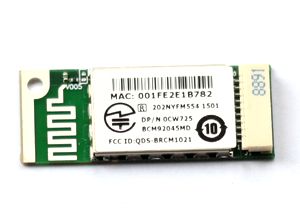
Dell Wireless 355 Module with Bluetooth 2.0 + EDR Technology User Guide
- Introduction
- Basic Operations
- Specifying How Bluetooth Technology Works on Your Computer
- How to Use Bluetooth
- Specifications
- Regulatory
- Troubleshooting
Bluetooth Networking Overview
Bluetoothwireless technology allows short-range (within a distance of 10 meters) communication among Bluetooth enabled devices, eliminating the need for cables. When connected, one device can use or be used by the other, as specified by the user.
Because Bluetooth communications are broadcast over the air, Bluetooth communications can be set to use encryption to protect against others intercepting sensitive data. Typical Bluetooth enabled devices include:
- Human interface devices such as a mouse or keyboard
- Computers (desktop, notebook, PDA, for example)
- Imaging devices (printers, scanners, and cameras)
- Printers
- Audio devices
- Network access points
- Telephones
- Fax machines
Examples of how one Bluetooth device can use or be used by another Bluetooth device are:
- Using a hands-free audio device with a wireless phone or internet telephony
- Using a wireless mouse, keyboard, or game controller
- Listening to audio on one device that is being played on another
- Exchanging files and business cards
- Synchronizing Personal Information Manager databases
- Connecting to the Internet
- Printing or sending a fax
To begin using your Bluetooth enabled computer for specific tasks, see "How to Use Bluetooth."
To change the default settings that control how Bluetooth works on your computer, see "Specifying How Bluetooth Technology Works on Your Computer."
To learn about available Bluetooth tools and how to use them, see "Using Bluetooth Tools."
If you are having difficulty using Bluetooth, see "Troubleshooting."
To learn more about Bluetooth functionality in general, see "Basic Operations."
Read More...